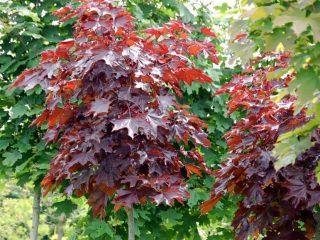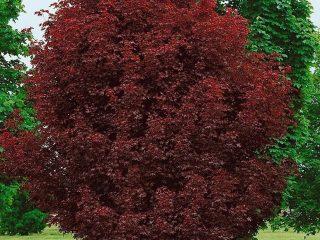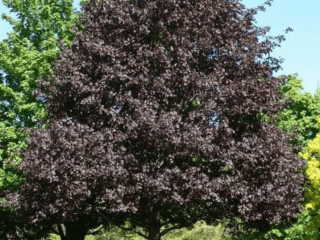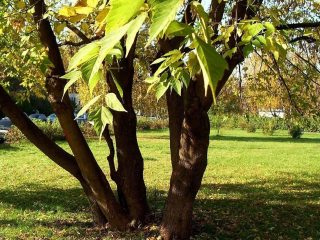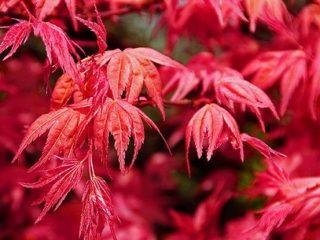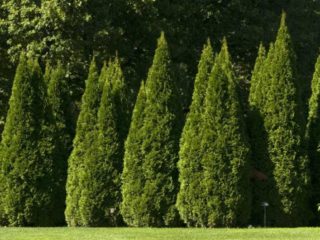Content
Maple is a very popular plant among landscape designers. He suffers from diseases quite rarely, although he is not completely immune from them. One possible symptom is black spots on maple leaves. It is quite possible to restore the healthy appearance of a tree; competent treatment will help with this. But it would be more advisable to minimize the risk of developing the disease by using preventive measures.
Why are maple leaves spotted?
The cause of black spots on maple leaves is a fungus. This is one of the main symptoms of the disease known to botanists as “rhythism.” It received its name based on the name of the pathogen - Rhytisma Acerinum.
Most often it affects trees in their natural habitat. But even specimens cultivated in captivity are not immune to the appearance of black spots on the leaves. By the way, the fact that they are infected with rhytism indicates a favorable environmental situation - the pathogen categorically does not tolerate a polluted atmosphere.
Signs of appearance
Directly black spots on the leaves of Norway maple and other varieties are not “killer” for the plant. However, their decorative effect suffers greatly.Their growth rate slows down significantly, immunity and cold resistance decrease, since the normal course of photosynthesis and other processes associated with metabolism is impossible.
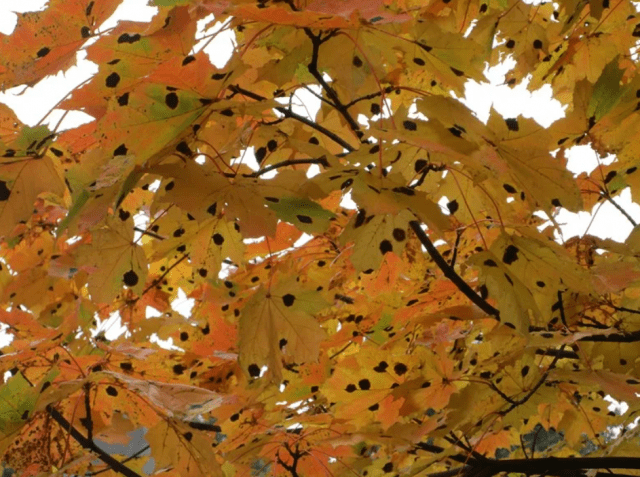
In autumn, a diseased tree sheds its leaves noticeably earlier than usual
If the appearance of black spots on leaves is regularly observed in nurseries, this inevitably means a decrease in the number of “standard” seedlings, and planting material no longer meets the standards. In parks, squares, and other “public areas” by autumn, it is quite likely that the pathogen that causes the appearance of black spots and spots will be “transferred” from maple leaves to other plants.
At first, the maple leaves become covered with pale yellow spots. They are small, their shape is quite regular, close to round. Gradually they increase in size and change color to black. The yellow tint becomes brighter, but remains only in the form of a clear narrow border.
If nothing is done, the black spots are covered with the “tissue” of the fungus developing from the mycelium - the stroma. Almost imperceptible points on their surface turn into glossy black “plaques”, gradually merging into a single convexity with a diameter of 1-1.5 cm with a dense, even hard surface. The bright yellow border remains.
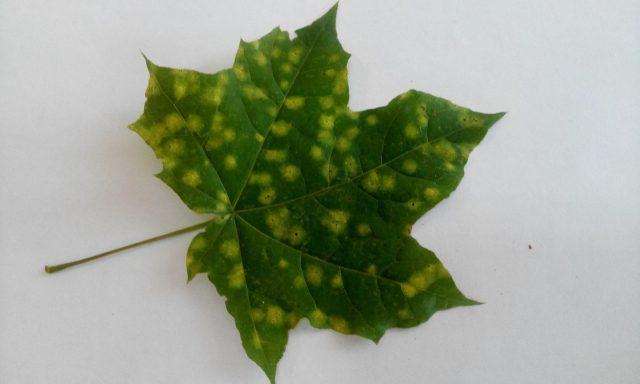
Early signs of rhitism appear in the first half of summer, and if the climate in the region is warm, then symptoms can be detected at the end of May
Under the protection of the hard shell, the process of conidial sporulation occurs. When it becomes covered with fine cracks, spores from the surface of the black spots on the maple infect its healthy leaves and nearby plants, spreading the disease.
Closer to autumn, fruiting bodies (apothecia) form in the stroma. They are able to overwinter in fallen leaves.Approximately in the middle of next spring, when the daytime air temperature reaches 10-12 °C, the pathogen becomes active again and, through ascospores (“bags” with spores) formed in the apothecia, infects the budding leaves, and black spots appear on the maple again.
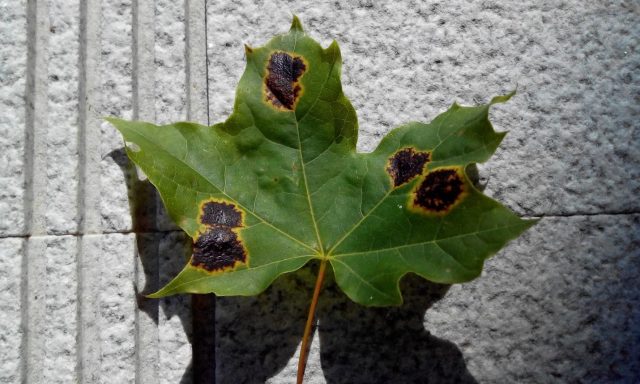
From a distance, black spots on maple can easily be mistaken for areas of rotting tissue
Measures to combat maple black spot
A fungus is “responsible” for the black spots on maple trees. Copper-containing preparations - fungicides - will help to cope with it. They are used after first studying the manufacturer's instructions and following its instructions. This especially applies to the process of preparing the solution, the frequency and frequency of treatments, and the need to use personal protective equipment.
The range of suitable drugs is quite wide. Along with the long-known and well-known copper sulfate and Bordeaux mixture, gardeners also use modern fungicides:
- Abiga Peak;
- Topaz;
- Horus;
- Previkur;
- Speed;
- Thiovit-Jet;
- Maksim;
- Planriz;
- Profit-Gold;
- Fitosporin-M.

Copper compounds are harmful to any pathogenic fungi
Preventive actions
The same measures that are practiced to protect garden crops from other fungal diseases will help prevent the appearance of black spots on maple:
- Compliance with the planting scheme, choosing a place for the maple, taking into account the “requirements” of the culture.This ensures the normal development of the tree, making it less susceptible to any negative external influences, including fungus, which causes the appearance of black spots on the leaves. Similar “support” is provided by competent agricultural technology.
- Mandatory cleaning of the tree trunk circle from fallen leaves and other plant debris, where the fungus that causes black spots on the maple successfully overwinters.
- Spraying trees and soil in the trunk circle with a fungicide solution in early spring, while the maples have not yet emerged from winter hibernation. This will protect them from fungal diseases, including black spots on maple leaves. In the fall, if characteristic symptoms were observed during the season, the treatment will have to be repeated.
- Regular (ideally weekly) inspection of plantings. This way you can notice the development of the fungus “responsible” for black spots on maple at an early stage, when it is easier to get rid of it than in severe cases.
- Weeding the soil in the tree trunk circle as needed. The pathogen that causes black spots on maple leaves may use weeds as “intermediate” hosts.
- Disinfect gardening equipment every time after work. If this is neglected, it may well turn into a source of spread of the fungus “responsible” for the black spots on the maple, and other pathogens.

The waste generated after harvesting fallen leaves cannot be stored on the site, much less added to the compost heap.
Conclusion
Black spots on maple leaves are a symptom indicating that the tree is infected with one of the diseases typical for the crop. In most cases, rhytism does not kill it, but the external attractiveness of the crown suffers greatly. It is quite possible to bring it back; fungicides will help with this. However, if you regularly devote a little time and effort to prevention, you can minimize the risk of infection.
